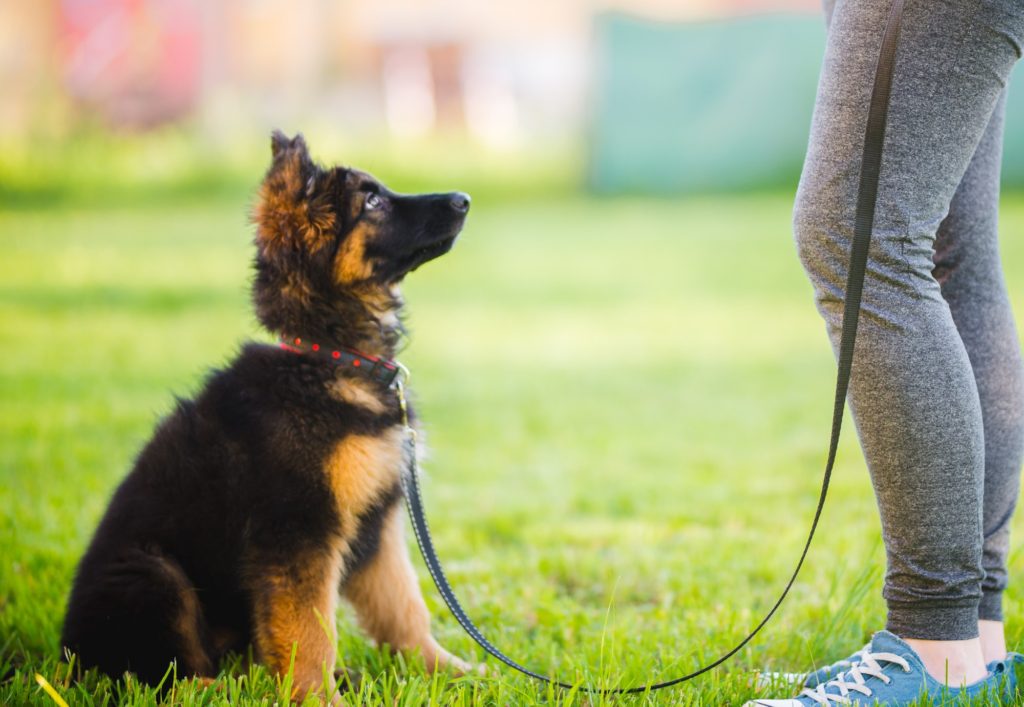Introduction:
Welcome to the exciting journey of training your new furry family member! Bringing a puppy into your home is a joyous occasion, but it comes with its challenges. This guide aims to help you navigate the intricacies of puppy training, turning those mischievous balls of fur into well-mannered companions. Let’s embark on this adventure together, where patience, consistency, and a sprinkle of love are your most potent tools.
Understanding Your Puppy’s Mindset Before diving into training techniques, it’s crucial to comprehend the world from your puppy’s perspective. Puppies are like sponges, absorbing information from their surroundings. Establishing a strong bond starts with understanding their basic instincts and behaviors.
The Power of Positive Reinforcement When it comes to training your puppy, positive reinforcement is your best friend. Puppies respond well to rewards for good behavior, whether it’s a tasty treat, a belly rub, or a simple “good boy.” This method not only makes learning enjoyable for them but also strengthens the bond between you and your pup.
Essential Puppy Training Commands Start with basic commands like “sit,” “stay,” and “come.” These fundamental commands lay the foundation for more advanced training. Consistency is key here; practice these commands in different environments to solidify your puppy’s understanding.
Crate Training: A Safe Haven Introduce your puppy to crate training early on. A crate becomes their safe space, providing security and a sense of belonging. Make the crate inviting with soft bedding and toys, ensuring your pup associates it with positive experiences.
Socialization: The Key to a Well-Adjusted Pup Expose your puppy to various people, environments, and other animals from an early age. Socialization prevents behavioral issues and helps your puppy grow into a confident and well-mannered adult dog. Plan playdates, visit dog parks, and enroll in puppy socialization classes.
Leash Training for Stress-Free Walks Teaching your puppy to walk on a leash without pulling is essential for enjoyable strolls. Use a lightweight leash and reward your pup for walking by your side. Patience is crucial; pups may initially resist the leash, so start with short, positive experiences.
Dealing with Unwanted Behaviors Puppies are bound to test boundaries, from chewing on furniture to excessive barking. Address these behaviors calmly and redirect their attention to appropriate outlets. Consistent correction and positive reinforcement will guide your puppy toward better choices.
Consistency Across the Board Consistency is the backbone of effective training. From using the same commands to maintaining a consistent daily routine, your puppy thrives on predictability. This stability fosters a sense of security, making it easier for them to grasp training concepts.
Patience: The Virtue of Puppy Training Puppies, like children, require time to grasp new concepts. Be patient and celebrate small victories. Avoid frustration, as negativity can hinder the learning process. Remember, the journey is just as important as the destination.
The Role of Play in Training Incorporate play into your training sessions. Interactive toys and games not only make learning fun but also tire out your puppy mentally and physically. A tired puppy is a well-behaved puppy.
Establishing Routine Health Checkups Regular veterinary visits are crucial for your puppy’s well-being. A healthy pup is more receptive to training. Discuss vaccinations, preventive care, and any concerns you may have with your veterinarian.
Growing with Your Puppy As your puppy grows, their training needs evolve. Adjust your training methods to suit their developmental stages. What worked during the early months might need tweaking as your pup enters adolescence.
Troubleshooting Training Challenges Encountering hurdles is normal during the training process. Whether it’s housebreaking difficulties or stubborn behavior, this section addresses common challenges and provides effective solutions.
The Power of Playful Learning Turn training into a game. Incorporate fun activities that stimulate your puppy’s mind, fostering an environment where learning is an enjoyable experience.
Building Trust and Understanding Trust is the cornerstone of any healthy relationship. Spend quality time bonding with your puppy, strengthening the emotional connection. This trust forms the basis for effective communication and obedience.
Conclusion: Congratulations on embarking on the incredible journey of training your puppy. With dedication, consistency, and a whole lot of love, you’ll witness your furry friend transform into a well-behaved and happy companion. Remember, training is an ongoing process that deepens the bond between you and your pup.
FAQs:
Q1: How long does it take to train a puppy successfully? A: The duration varies, but with consistent training, you can see significant results in a few weeks. However, ongoing reinforcement is essential for long-term success.
Q2: Is it possible to train an older dog? A: Absolutely! While puppies may learn faster, older dogs can still be trained. Patience and consistency are crucial, regardless of age.
Q3: What if my puppy isn’t responding to positive reinforcement? A: Explore different types of rewards and adjust your training approach. Consult a professional trainer if needed to identify alternative methods.
Q4: Can I train my puppy without professional help? A: Yes, many pet owners successfully train their puppies at home. However, professional guidance can be beneficial, especially for challenging behaviors.
Q5: How do I deal with potty training challenges? A: Potty training can be challenging, but consistency and positive reinforcement are key. Establish a routine and take your puppy outside frequently, especially after meals and playtime.


